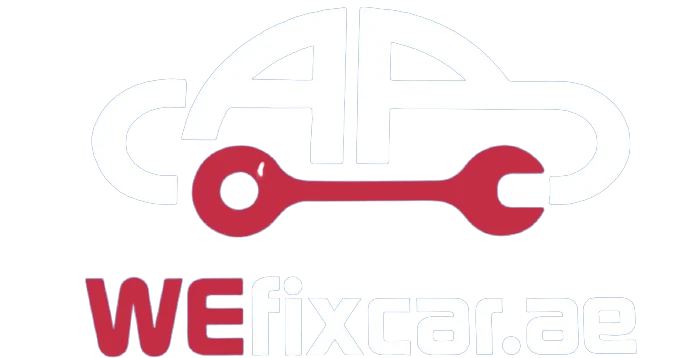Proper vehicle maintenance is essential for a smooth and safe driving experience. Two critical aspects that often get confused are wheel balancing and wheel alignment. While both processes contribute to a smooth ride and extend the lifespan of your tires, they serve distinct purposes. Understanding the difference between wheel balancing and wheel alignment will help you maintain optimal driving performance and avoid costly repairs in the future.
In this blog, we will explain wheel balancing and wheel alignment, why they are important, and how they affect your vehicle’s performance. Let’s dive in!
What is Wheel Balancing?
Wheel balancing refers to the process of ensuring that the weight of each tire and wheel is evenly distributed around the axle. Unbalanced wheels can lead to a host of driving issues, such as vibrations, uneven tire wear, and poor fuel efficiency.
When a wheel is balanced, small weights are added to specific points on the wheel to counteract any heavy spots. This balance is crucial for smooth driving, especially at higher speeds.
Why is Wheel Balancing Important?
- Smooth Driving: Proper wheel balancing ensures that the tires rotate evenly, preventing uncomfortable vibrations while driving. This is particularly important at high speeds or on highways.
- Reduced Wear: Unbalanced wheels lead to uneven wear on tires, which can shorten their lifespan and increase the frequency of tire replacements.
- Improved Fuel Efficiency: Properly balanced wheels reduce friction, allowing the engine to work more efficiently and, in turn, improving fuel efficiency.
- Enhanced Handling: Correct wheel balancing ensures that the vehicle’s steering response remains stable and precise.
What is Wheel Alignment?
On the other hand, wheel alignment refers to adjusting the angles of the wheels so that they are set to the manufacturer’s specifications. This is necessary for ensuring that the wheels are perpendicular to the ground and parallel to each other. Misaligned wheels cause the car to pull to one side, resulting in uneven tire wear, poor handling, and reduced safety.
Why is Wheel Alignment Important?
- Even Tire Wear: Misaligned wheels can cause uneven wear across the tread of your tires, reducing their lifespan and leading to costly replacements.
- Steering and Handling: Proper alignment helps the vehicle respond better to steering inputs, improving both handling and steering response.
- Prevents Other Damage: Misalignment can place unnecessary stress on the vehicle’s suspension and steering components, leading to potential breakdowns and expensive repairs.
- Improved Fuel Economy: Proper alignment reduces rolling resistance, leading to improved fuel economy.
Wheel Balancing vs. Wheel Alignment: The Key Differences
While wheel balancing and wheel alignment both contribute to a smooth driving experience, they address different issues related to your vehicle’s wheels and tires. Here are the key differences between the two:
1. Purpose
- Wheel Balancing: Ensures the even distribution of weight around the wheel and tire, preventing vibrations and promoting smoother driving.
- Wheel Alignment: Adjusts the angles of the wheels to ensure they are correctly aligned with the manufacturer’s specifications, improving handling and tire wear.
2. When to Do It
- Wheel Balancing: Typically required when you replace tires, have uneven wear on your current tires, or notice vibrations while driving.
- Wheel Alignment: Generally needed after you hit a curb or pothole, notice that your vehicle pulls to one side, or if your tires wear unevenly.
3. Effect on Tires
- Wheel Balancing: Helps prevent uneven wear caused by unbalanced tires, extending their lifespan.
- Wheel Alignment: Improper alignment leads to uneven tire wear, often with excessive wear on the inner or outer edges of the tires.
4. Frequency of Maintenance
- Wheel Balancing: It’s recommended to have your wheels balanced every time you replace tires, rotate them, or when you feel vibrations.
- Wheel Alignment: Most vehicles should have their alignment checked annually or every 10,000 to 15,000 miles, or more frequently if you’ve experienced an impact (like hitting a pothole).
Signs That Your Vehicle Needs Wheel Balancing or Alignment
When to Consider Wheel Balancing
- Vibrations: If you feel vibrations in the steering wheel or through the seat while driving, especially at higher speeds, your wheels may be out of balance.
- Uneven Wear: If your tires are showing signs of wear in specific areas, such as one side wearing more than the other, you may need a wheel balancing service.
When to Consider Wheel Alignment
- Vehicle Pulls to One Side: If your car drifts or pulls to the left or right without you steering, it’s a sign that your wheels are misaligned.
- Steering Wheel Off-Center: If your steering wheel is tilted to one side when driving straight, it may indicate poor alignment.
- Uneven Tire Wear: If the tread on your tires is wearing unevenly, this could be due to poor alignment, especially if it’s more noticeable on one side of the tire.
How Wheel Balancing and Alignment Affect Your Vehicle’s Performance
1. Handling and Steering
Both wheel balancing and alignment are crucial for good steering response. If your wheels are unbalanced, you’ll notice vibrations in the steering wheel, especially at higher speeds. With poor alignment, the vehicle will not track straight, which can cause the steering wheel to be off-center or pull to one side.
2. Tire Lifespan
Proper wheel balancing ensures that the tires wear evenly, increasing their lifespan. Similarly, proper alignment correction ensures that the tires don’t wear unevenly across their surface, which helps maximize their life and performance.
3. Fuel Economy
When your wheels are balanced and aligned, the car drives more efficiently, which can improve your fuel economy. Unbalanced wheels and misaligned tires increase rolling resistance, which makes the engine work harder and use more fuel.
How to Maintain Your Vehicle’s Wheels for Optimal Performance
Regular wheel balancing and alignment checks are essential to maintaining the performance and lifespan of your vehicle. Here are some tips to keep your wheels in good condition:
- Rotate Tires Regularly: Tire rotation helps ensure even wear and helps with wheel balancing. This should be done every 6,000 to 8,000 miles or as recommended by your car manufacturer.
- Check Alignment: Have your alignment checked annually or if you notice any issues with steering or uneven tire wear.
- Inspect Tires: Regularly check for any bulges, cuts, or other signs of damage that could indicate the need for balancing or alignment.
Not sure whether your car needs a wheel balancing or alignment correction? Book an appointment at We Fix Car today, and our experts will ensure your wheels are in top shape for smooth driving!
Frequently Asked Questions (FAQs)
1. How do I know if I need wheel balancing or alignment?
If your vehicle is vibrating or pulling to one side, it could indicate the need for wheel balancing or alignment. Uneven tire wear or an off-center steering wheel are also common signs.
2. Can I do wheel balancing and alignment myself?
While you can perform basic checks, wheel balancing and alignment require specialized equipment and expertise. It’s best to have a professional handle these services.
3. How often should I get my wheels balanced?
You should get your wheels balanced every time you replace your tires or if you notice vibrations while driving. Regular tire rotations help maintain balance.
4. How often should I get my wheel alignment checked?
It’s recommended to have your wheel alignment checked annually or every 10,000 to 15,000 miles. You should also check it after any significant impacts, like hitting a pothole.
5. Will misalignment affect my car’s handling?
Yes, misalignment can cause poor handling, including drifting to one side, an off-center steering wheel, and excessive wear on your tires.
Conclusion
Both wheel balancing and wheel alignment are essential for maintaining your vehicle’s performance, tire longevity, and fuel efficiency. By addressing any issues with your wheels, you ensure a safer, smoother ride and avoid costly repairs down the road. Regular maintenance is key to keeping your vehicle running at its best.
Book a wheel balancing or alignment check at We Fix Car today! Our experienced technicians will ensure your wheels are properly maintained for optimal performance.



